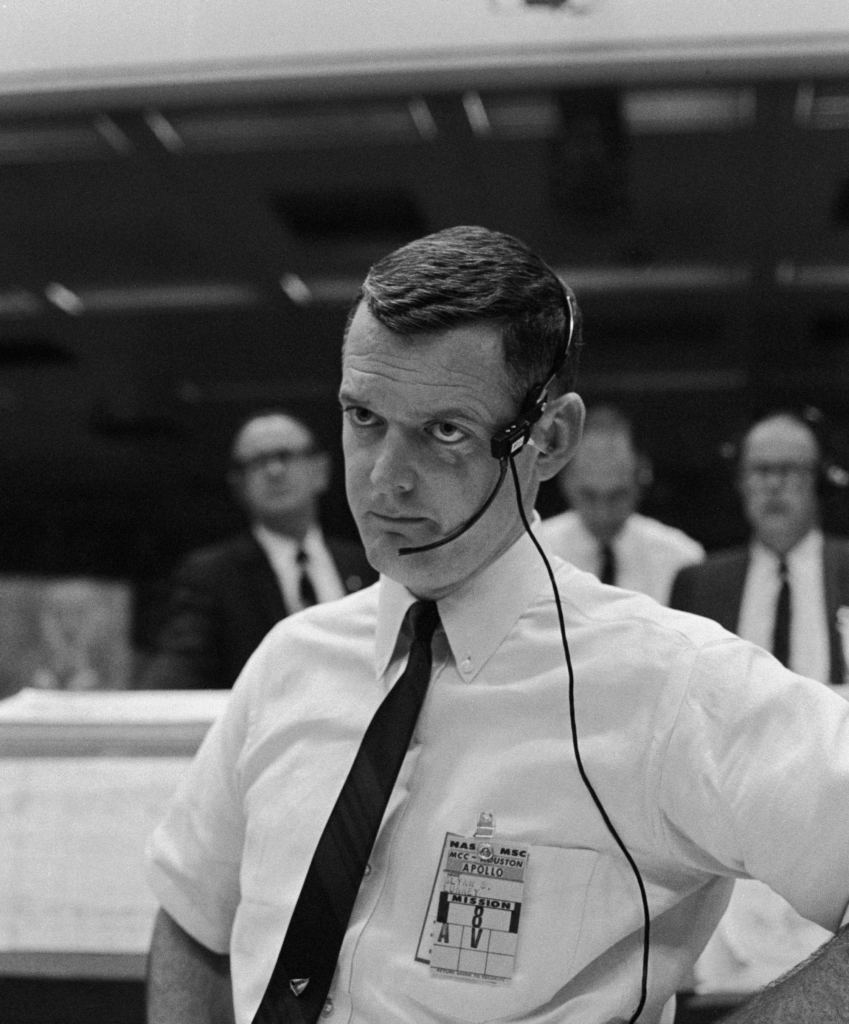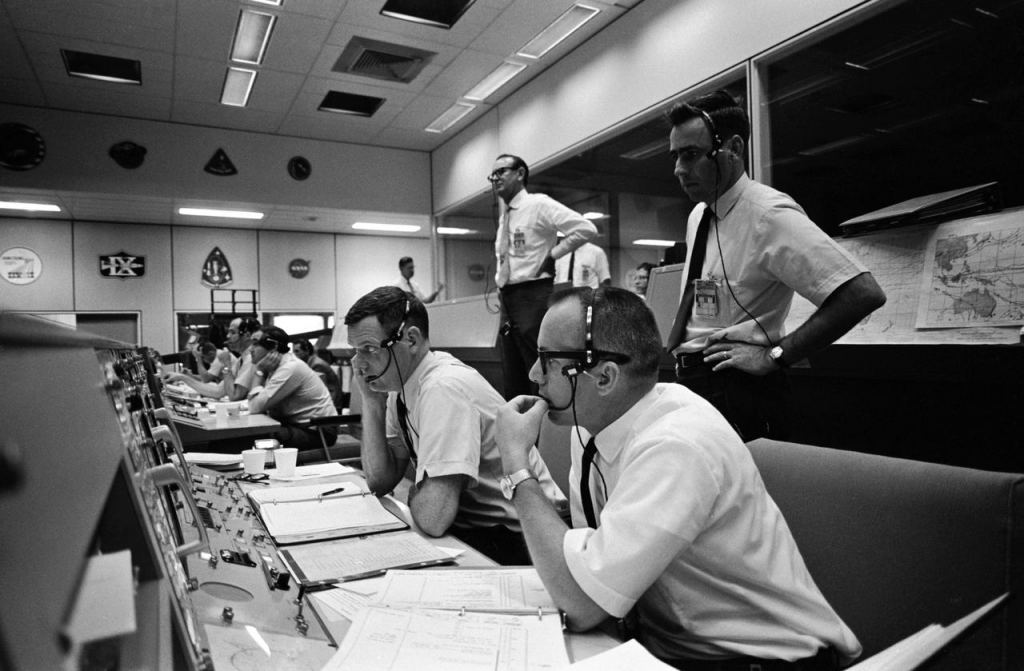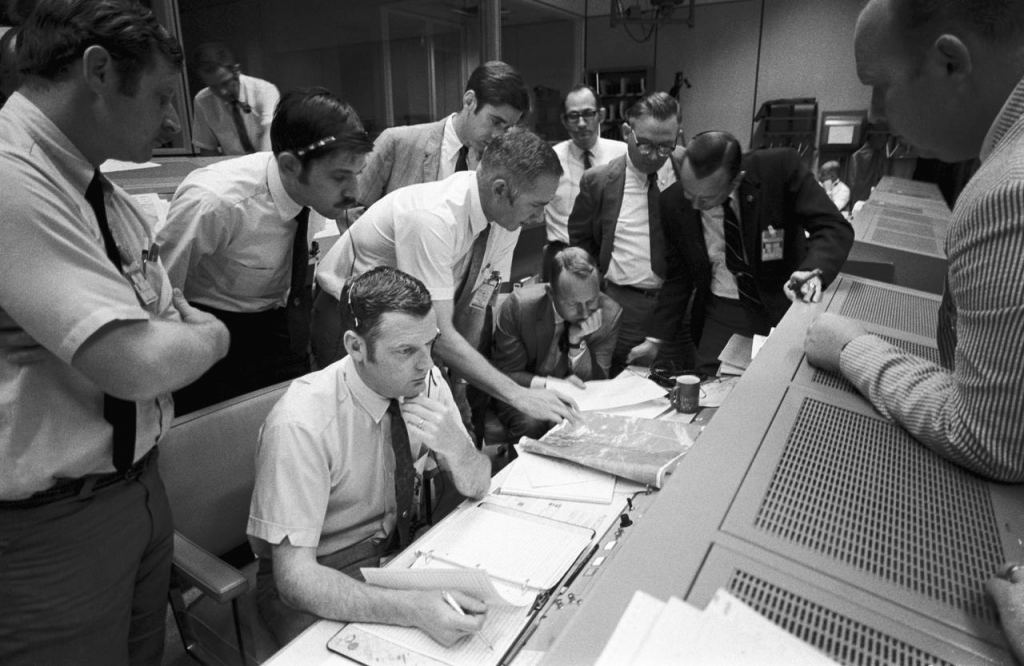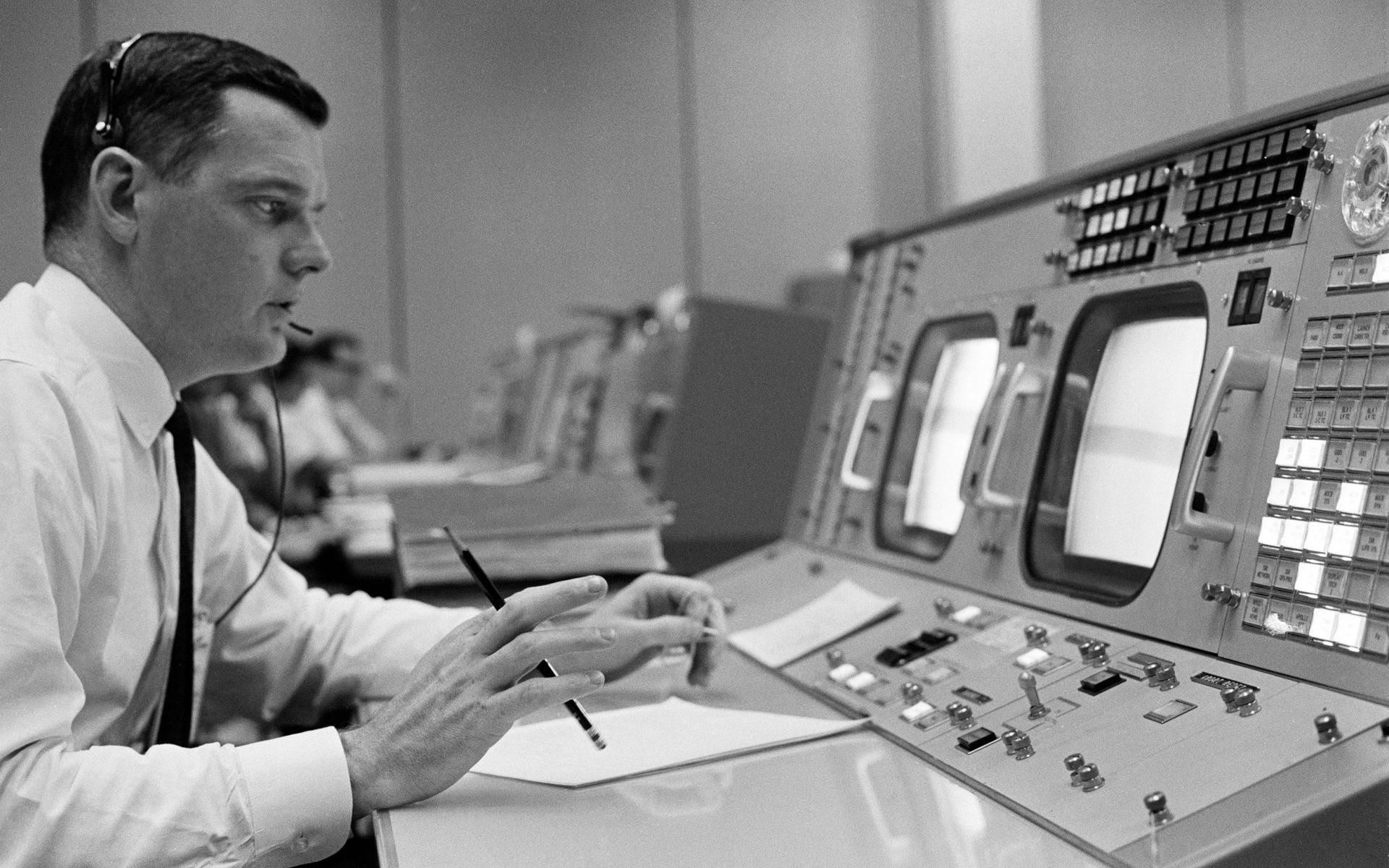Legendary NASA flight director Glynn Lunney has passed away at age 84. Lunney played a key role in the early days of NASA, helping to create the concept and operation of what we now reverently know as Mission Control. His calm decisiveness was lauded during the Gemini and Apollo missions he guided as flight director, and his leadership was especially pivotal in bringing the crew of Apollo 13 safely back to Earth.
Lunney worked on the Mercury, Gemini, Apollo, Skylab, and Space Shuttle programs. He retired from NASA in 1985 as manager of the Space Shuttle Program, but continued to lead human spaceflight activities in private industry with Rockwell International and, later, United Space Alliance until his retirement in 1995.

Lunney was gracious in all aspects, always sharing any accolades with his colleagues and at all times willing to share insights and stories from his impressive career at NASA. In 2018, he kindly agreed to be interviewed for my book on Apollo, “Eight Years to the Moon: The History of the Apollo Missions,” even though he had just finished going through medical treatments for leukemia.
In the book’s first chapter, I wrote of Lunney when he moved to Houston in 1962 to begin spearheading whatever was needed to create the Mission Operations Control Room (MOCR) at what was then known as the Manned Spacecraft Center, now Johnson Space Center:
Lunney was only 25, but he had already established himself as a problem solver, getting out in front to tackle some of the issues of operating a human spacecraft. He had begun his career as an aeronautical research engineer in June of 1958 with N.A.C.A.’s co-op training program at the Lewis Research Center in Cleveland. He was in [NASA leader} George Low’s division, and one day a preliminary drawing of the proposed Mercury spacecraft was being passed around the office. Lunney was utterly captivated, and in September of ’59, decided to follow Low to Langley, and was soon chosen to become part of the initial 35-member Space Task Group.
Within the first year, he became an analyst, working on the technical issues of spacecraft re-entry and how to control where the Mercury spacecraft would land. He soon met fellow Space Task Group member Christopher Kraft, who had been assigned to the flight operations division, tasked with creating flight plans and figuring out how the spacecraft should be operated.
The job was daunting since humans hadn’t yet flown in space. But Kraft realized that just like test pilots, astronauts would need a system of communications and support back on Earth during critical phases of the mission. The concept of a control center to monitor and operate space flights in real-time was born, and Lunney was fascinated.
“It was a relatively straightforward thing, but no one had done anything like that before,” Lunney said. “We were still just a small group of 35, so I got involved, and then we brought on more people to help figure this out.”
From “Eight Years to the Moon: The History of the Apollo Missions”
Lunney spoke with pride of the young people who were brought on board to help create and define what we now know as Mission Control.
“It was quite a thing,” Lunney told me during our interview in 2018. “Someone calculated that during Apollo, the average age of the Control Center key operators was 27. We just threw them into the fray to figure things out, and there wasn’t time for years of prep for any new guy. There are all sorts of leadership lessons you could learn from how these young men figured out everything we needed to do to be successful with Gemini and Apollo. It was a beautiful thing to watch.”

One of those young men was Dave Reed, who worked in Mission Control as the Flights Dynamics Officer (FIDO) for Apollo
“The first voice I ever heard from NASA was that of Glynn’s when he offered me my first job as a Flight Dynamics Officer,” Reed said via email. “What happened to me, to us of all under his leadership in a group affectionately known as the TRENCH became legend. Glynn was my mentor and my leadership role model. He put real meaning in the overworked word ‘teamwork.’ If he taught us anything, it was that.”
Reed recalled a toast Lunney made to his colleagues, at an event to celebrate the 40th anniversary of Apollo 11 landing on the Moon.
“We were together again as the team he created and the family we had become,” Reed said. In Lunney’s own words, he offered a most memorable toast one evening:
“It was a grand time and it was a grand adventure. We were really, really fortunate to be able to do what we did. It was a magic time. I don’t know if people will have it again, but goddamn we had our chance at it and we grabbed it and shook it! And it was good.”
Many at NASA say Lunney never adequately received the praise he deserved for how he handled the tense hours following the explosion that crippled the Apollo 13 spacecraft on its way to the Moon. Under Lunney’s direction, the flight controllers and support personnel worked with the astronauts to deliberately shut down the Command Module systems so that the Lunar Module could be used as a lifeboat for the crew during the journey home to Earth. Lunney’s leadership helped ensure the crew was kept safe while longer-term plans were developed for a successful reentry and splashdown.
Astronaut Ken Mattingly – who was originally supposed to be part of the crew of Apollo 13, but was pulled from the flight just days before launch because he may have been exposed to measles – has often told how Lunney lead by example and calm, getting the frantic flight controllers to concentrate on solving the myriad problems that lay before them in the frantic moments after the explosion of an oxygen tank in the spacecraft’s service module.

“Glynn stood up and in his quiet way,” Mattingly said in a NASA oral history, “he went around and he just started asking people, and my sense was that he was asking questions that were relevant, but not particularly important, but he went to every position to the room and gave them a question to get back to him on. So all of a sudden— and I’ve never asked him about it, but my sense was, it didn’t matter what question he asked. It was just ‘get your mind on something constructive, and then it’ll all take care of itself.’ You could almost feel the room settle down. Emotions didn’t go away and all that, but all of a sudden they were back to the team that had trained with a sharp focus and a procedure that they followed.” Mattingly later called it a “professionalism at its finest, absolutely the most magnificent performance I’ve ever watched.”
You can listen to voice recording of the Flight Director’s loop at that moment in Apollo 13 courtesy of the Apollo in Real Time website. You’ll hear how Lunney, at just age 33, takes charge in his calm, reassuring manner, even though the spacecraft is venting oxygen, losing power, and in danger of floating helplessly in space.
Lunney received the Presidential Medal of Freedom as part of the Apollo 13 Mission Operations Team.
Lunney is survived by his wife Marilyn and four children. One son, Bryan, later became a NASA flight director, the only second-generation flight director to date. Lunney will be missed by everyone who was fortunate enough to meet him, especially those worked under his guidance and leadership.
In the book From The TRENCH of Mission Control to the Craters of the Moon, Lunney wrote about some of his experiences. Lunney also wrote his own book, titled “Highways Into Space,” which may be available through your local library’s loan program.

